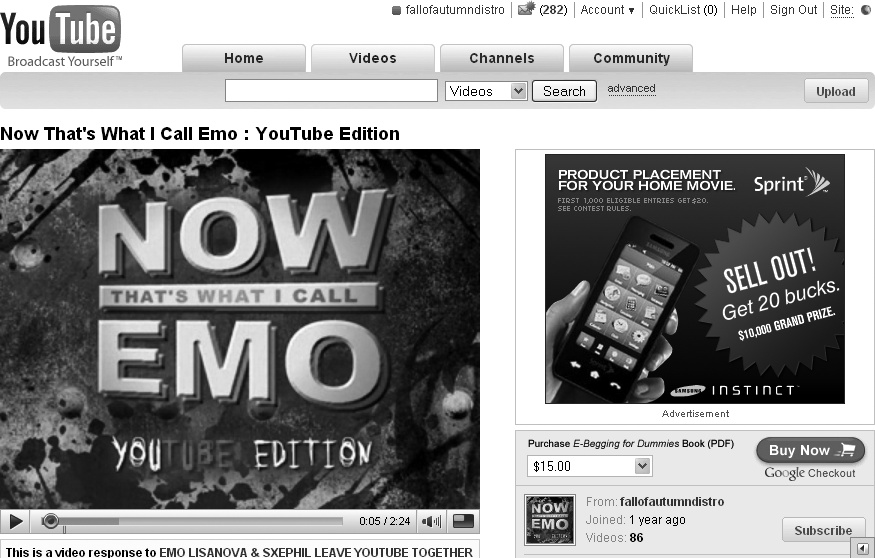YouTube is owned by Google and therefore uses Google's advertising program, AdSense, to monetize its Partners' videos. AdSense (www.adsense.com) (URL 11.6) is a program open to anyone who creates an AdSense account. Outside of YouTube, AdSense is used by webmasters and bloggers to display text and picture ads alongside their content, in hopes of making money from these ads. Google provides the ads and splits the revenue with these website owners, just as YouTube does with its content creators.
Most AdSense ads are paid on a per-click basis, meaning the webmaster and Google make money only when a visitor clicks the ad. However, some ads are paid for on a per-impression basis, meaning the webmaster and Google make a set fraction-of-a-dollar amount every time a visitor views that ad, that is, visits the page on which the ad is displaying.
YouTube ads are all paid for on a per-impression basis. Ad rates seem to vary from campaign to campaign, because earnings per view vary each and every month. AdSense ads display next to videos uploaded by Partners. You'll need to keep your AdSense account in good standing to remain in the Partner Program. This means you should not try to fraud the system by autorefreshing your videos. You should also not click over and over on your own ads; this gives the impression to advertisers that your videos are more popular than they actually are and breaks the contract you sign with YouTube when you become a Partner. (Both YouTube and AdSense have really smart software to detect all fraud techniques, and you will get caught.)
While the majority of AdSense ads display next to the video (Figure 11-7), a second form of advertising on YouTube, known as an InVideo ad, displays in the video. InVideo ads are worth much more than the ads that display only next to your videos. InVideo ads display within the bottom 20 percent of the video window, for 15 seconds, starting at the 15-second mark in the video (Figure 11-8). These ads may be a little more intrusive than the AdSense ads, but the user can close them immediately; and, as I said, the InVideo ads pay much better than the ads that display only next to your videos.
Figure 11-8. InVideo ads display in the lower 20 percent of the video window and pay more than the ads that display only next to your videos.
InVideo ads pay better, which means they cost advertisers more. These ads are not commonplace. InVideo ads are typically reserved for bigger campaigns. If you see these ad campaigns while watching others' videos, you can amend your relevant videos' descriptions and tags (see the "PRO TIP" sidebar) to target that particular ad campaign.
With any luck, your amended video will start displaying the current InVideo ad campaign.

